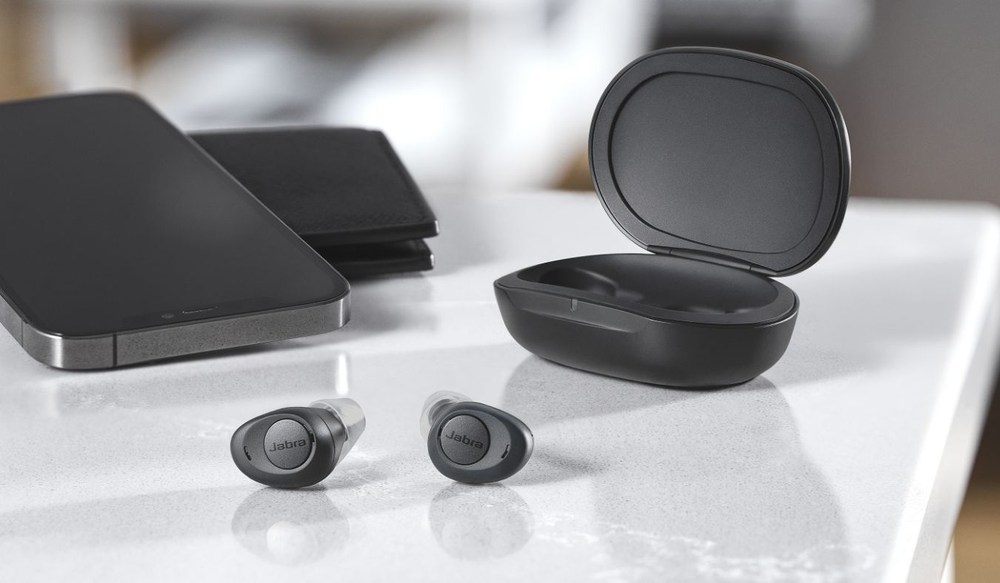Tips for Managing Hearing Aids During Fall Activities
Fall brings plenty of reasons to spend time outside, from weekend hikes to

By: admin | October 20, 2025
Fall brings plenty of reasons to spend time outside, from weekend hikes to backyard gatherings to simply enjoying the crisp air on your daily walks. But the seasonal shift also introduces a few factors that can affect how your hearing aids perform. Cooler temperatures, morning moisture and the scarves and hats you layer on for warmth all interact with your devices in ways that summer weather doesn’t. You might notice condensation building up more easily, or find that your hearing aids feel different when you’re bundled up against the chill. These aren’t major obstacles, but they do call for a bit of extra awareness as you transition into the season.
The goal isn’t to avoid outdoor activities or change your routine but rather to make small adjustments that keep you comfortable and your hearing aids functioning well. When your devices are properly cared for during seasonal changes, you can move through your day with confidence, whether you’re raking leaves, attending a football game, or meeting friends for coffee on a patio. Fall is a time when many of us become more active outdoors again after the summer heat, and your hearing aids should support that lifestyle rather than hold you back.
Understanding how your hearing aids work helps you get the most out of them each day. These small devices are built to pick up sound through a microphone, process it and deliver a clearer signal to your ear through a receiver. Modern hearing aids use advanced technology to adjust automatically to different listening environments, helping you hear speech and background sounds more comfortably. Knowing what each part does makes it easier to care for your devices, spot small issues early and feel more confident using them in everyday situations.
Each hearing aid is programmed to match your specific hearing needs, which means it’s doing more than just making things louder. It’s fine-tuning what you hear so conversations, music and environmental sounds feel natural. When you understand how your hearing aids respond to different sounds, you can adjust settings or ask for changes that improve comfort and clarity. This knowledge makes a big difference in how well your devices work for you and how easily they fit into your daily routine.
Cooler fall temperatures can affect how hearing aids perform, especially when the weather changes quickly between warm afternoons and chilly mornings. Sudden shifts in temperature can cause condensation to form inside the device, which may lead to distorted sound or brief interruptions in function. This moisture can build up in microphones or receivers and make it harder for your hearing aids to maintain clear sound quality.
Cold air can also impact battery life, causing batteries to drain faster or provide less consistent power. Metal parts within the device may contract slightly in lower temperatures, which sometimes affects how snugly battery doors or other components fit. Even the materials used in tubing or domes can stiffen in cooler air, leading to minor changes in comfort or sound delivery. These temperature-related issues are common during fall and can affect how reliably your hearing aids perform throughout the season.
You can reduce the effects of cooler fall weather on your hearing aids by taking a few simple steps. Keeping your devices dry is the first priority. When you move between outdoor and indoor temperatures, briefly open your battery door or remove rechargeable devices from your ears to let any condensation evaporate. Using a drying case or hearing aid dehumidifier overnight also helps prevent moisture from building up inside the microphones and receivers.
Cold weather can also shorten battery life, so keeping spare batteries on hand is a good idea. Store them at room temperature rather than in a cold vehicle or jacket pocket to preserve their charge. When you spend time outdoors, wearing a hat or headband that covers your ears can shield your hearing aids from cold air and temperature swings.
Moisture is one of the most common challenges for hearing aids during the fall. Cooler air often holds more humidity, and activities like walking in light rain or raking leaves can expose your devices to damp conditions. Even temperature changes between indoors and outdoors can cause condensation to form inside your hearing aids. This extra moisture may lead to weak sound, static or temporary malfunctions if it reaches sensitive components.
Fall clothing can also trap moisture around the ears. Hats, scarves and hoods may limit airflow, which makes it harder for hearing aids to stay dry. If your devices ever sound muffled or seem to stop working after time outside, moisture is often the cause.
Moisture and condensation can quietly affect hearing aid performance, especially during the fall when changes in temperature and humidity are common. As moisture collects inside or around your devices, it can cause sound distortion, weak volume or intermittent performance. Over time, repeated exposure to moisture and condensation may shorten the life of delicate electronic parts, even if the effects are not immediately noticeable.
To help prevent issues from moisture and condensation, give your hearing aids time to adjust when moving between temperature extremes. Wiping them gently with a soft, dry cloth after being outdoors or in damp environments can help remove excess moisture. Storing your hearing aids in a drying kit or dehumidifier overnight removes any lingering dampness. Paying attention to these small daily habits can help keep your devices working properly throughout the fall season.
Windy fall days can create several challenges for people who wear hearing aids. Gusts of wind can make devices feel loose or even cause them to fall out during outdoor activities. Hats, scarves or hoods can shift with the wind and accidentally press against or pull on hearing aids, affecting their position and comfort.
These conditions can also interfere with how well your devices pick up sound. Wind blowing across microphones may create feedback or whistling noises, making it harder to hear clearly. Thick or layered fabrics from scarves and hats can cover the microphones, block sound or change how the hearing aids fit in your ear. The combination of moving air and bulky fall accessories can make wearing hearing aids outdoors feel unpredictable and sometimes uncomfortable.
Even simple activities like walking through a windy street or stepping out from a building into a gusty day can trigger these issues. The shifting of hair, clothing and hats adds another layer of difficulty, making it easy for devices to slip or for sound to become distorted. These everyday autumn conditions highlight how much the season itself can impact hearing aid performance and comfort.
Windy fall days can make wearing hearing aids more challenging and may even cause feedback, where a high-pitched whistling sound occurs. Gusts of wind hitting the microphones directly can trigger this unwanted noise, making conversations harder to follow and creating a distracting experience. Hats, scarves or hoods that press on the devices or shift them slightly can also contribute to feedback by changing how the hearing aids sit in your ears.
To reduce these problems, make sure your hearing aids are properly seated before going outdoors. Adjusting accessories so they cover your ears comfortably without pressing on the devices can help prevent them from moving. Using retention clips or hearing aid bands can also keep your aids secure, minimizing the chances of both dislodging and wind-related feedback while you are outside.
Dust and debris are common in the fall, especially if you spend time outdoors. Keeping your hearing aids clean after exposure to dirt helps them work better and last longer. To clean your hearing aids:
When you are not wearing your hearing aids outside, safe storage is important to prevent damage or loss. Always use a hard, protective case that closes securely and keeps out dust, dirt and moisture.
Keep your case in a spot that is easy to remember but away from direct sunlight, heat or areas where pets or young children can reach. If you will not be using your hearing aids for several hours, remove the batteries to help prevent corrosion and keep the devices in good working order.
Long outings in the fall, like hikes or day trips, can use up your hearing aid batteries faster than expected. Cold weather can also cause batteries to drain more quickly. If your hearing aids use rechargeable batteries, bring a portable charger with you.
Packing extra batteries or a charger helps you avoid being caught without working hearing aids during your plans. Keeping a small supply in your bag or pocket makes it easier to enjoy fall activities without interruptions.
Using a drying kit or dehumidifier at home can help prevent moisture problems, especially during damp fall months. Hearing aids are sensitive to water, so regular drying can make a difference in how well they perform.
A drying kit or dehumidifier is especially helpful if you sweat a lot, live in a humid area, notice your hearing aids feel damp after wearing them outside, or have had issues with sound cutting out. Using these tools overnight can help remove trapped moisture that builds up during the day and keep your hearing aids ready for use each morning.
Fall weather can bring small but noticeable changes to how your hearing aids feel and perform. Cooler temperatures, wind and added layers can affect comfort and how securely your devices sit in your ears. Being aware of these seasonal factors helps you understand why your hearing aids might behave differently than in summer and allows you to enjoy outdoor activities without unnecessary frustration or interruptions. Paying attention to how your devices respond to the season ensures you stay connected and able to hear clearly throughout your day.
Taking a little extra care during autumn keeps your hearing aids working effectively so you can fully enjoy everything the season has to offer. If you ever notice persistent issues or want guidance on managing your devices in cooler, breezier conditions, Flynn Associates can help. You can reach us at one of our three hearing clinics in Concord, MA: (978) 759-3540, Plymouth: (508) 923-7503 or Wellesley: (781) 943-5040. Small seasonal adjustments make a big difference in comfort and performance, letting you focus on enjoying fall instead of worrying about your hearing aids.
Tags: hearing aid basics, hearing aid repair, hearing aid styles

Fall brings plenty of reasons to spend time outside, from weekend hikes to
By: admin | October 20, 2025

Hearing aid companies now have access to information they never had
By: admin | July 29, 2025

Your hearing aids work hard every day to help you stay engaged in
By: admin | June 20, 2025
